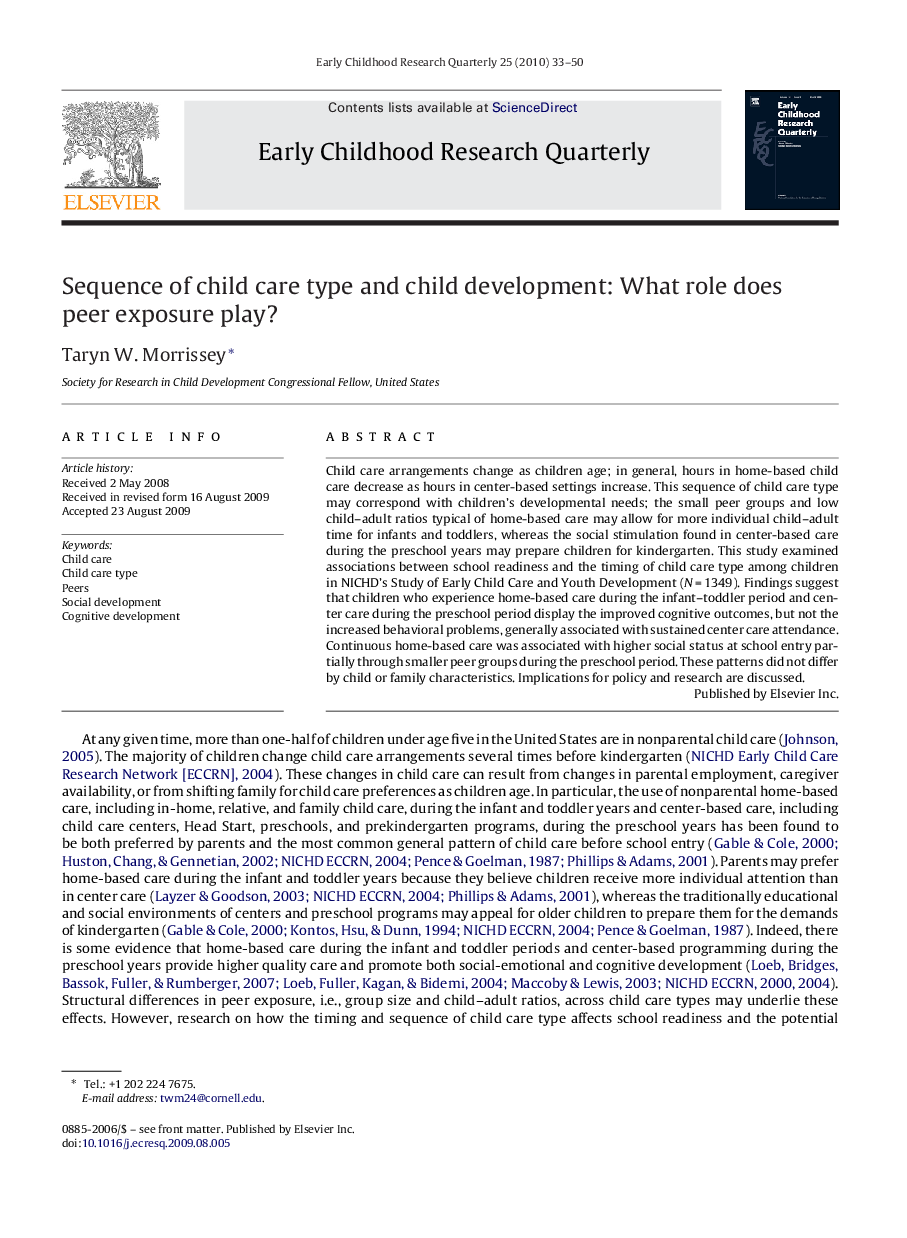| کد مقاله | کد نشریه | سال انتشار | مقاله انگلیسی | نسخه تمام متن |
|---|---|---|---|---|
| 354185 | 618977 | 2010 | 18 صفحه PDF | دانلود رایگان |

Child care arrangements change as children age; in general, hours in home-based child care decrease as hours in center-based settings increase. This sequence of child care type may correspond with children's developmental needs; the small peer groups and low child–adult ratios typical of home-based care may allow for more individual child–adult time for infants and toddlers, whereas the social stimulation found in center-based care during the preschool years may prepare children for kindergarten. This study examined associations between school readiness and the timing of child care type among children in NICHD's Study of Early Child Care and Youth Development (N = 1349). Findings suggest that children who experience home-based care during the infant–toddler period and center care during the preschool period display the improved cognitive outcomes, but not the increased behavioral problems, generally associated with sustained center care attendance. Continuous home-based care was associated with higher social status at school entry partially through smaller peer groups during the preschool period. These patterns did not differ by child or family characteristics. Implications for policy and research are discussed.
Journal: Early Childhood Research Quarterly - Volume 25, Issue 1, 1st Quarter 2010, Pages 33–50